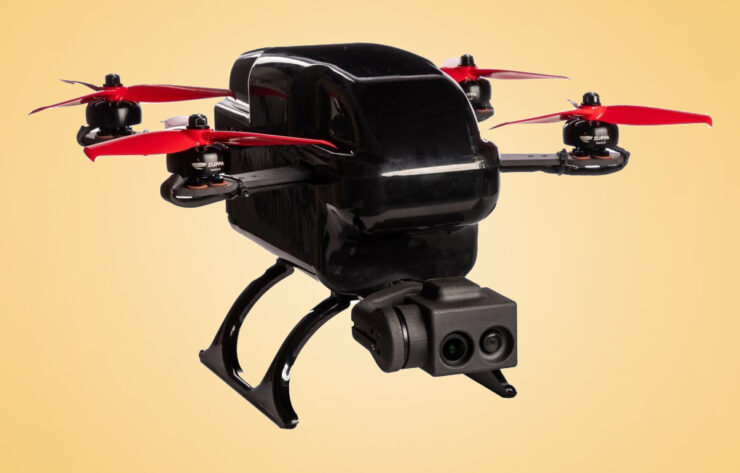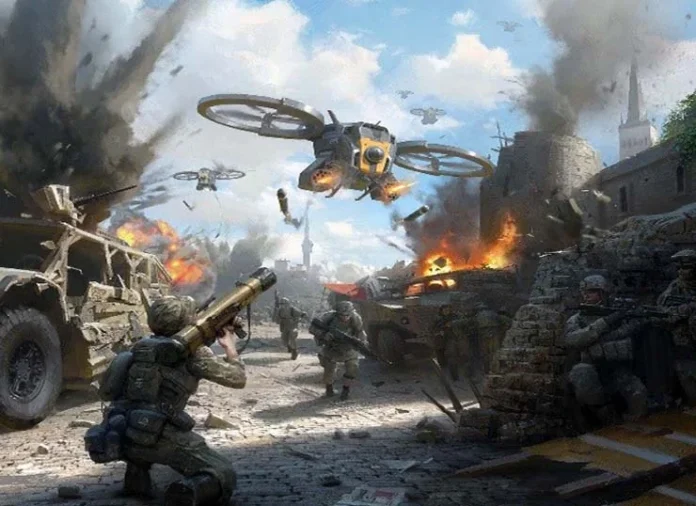The current generation of army personnel is about to witness a new multi-dimensional arms race that is going to shake up the entire defence ecosystem – like never before. The scale and magnitude of this disruption are completely transforming the established norms, practices, and rules of engagement.
The formidable battle tank which replaced the horse cavalry is now at the mercy of micro-drones, just like the artillery shells are getting out of date when compared to high-precision loitering munitions. It is a scenario in which antiaircraft radar batteries and missiles are proving to be ineffective against swarms of low-cost drones, while satellite-based situational awareness is proving to be less effective than COTS (commercial off-the-shelf drones), facial and object recognition tools.
So much so that traditional defence supply chain domination of the USA, Russia, and Israel seems to be crumbling in front of the likes of Iran, Turkey & China. This from an Indian perspective is an unenviable position — given the lack of a robust defence manufacturing ecosystem. Iran’s emergence as a global drone superpower and its impact on the Russo-Ukraine war has proved beyond doubt that the time-tested conventional approach of relying on Israeli or US drones is not a viable option anymore for the Indian Army. This should act as a wake-up- call for the Indian Army to build domestic capacities instead of spending on imports in panic.
It is really remarkable how Iran developed its domestic capabilities and emerged as a global drone superpower due to forced denial and sanctions. Fortunately, India is not in such a situation. India should self-impose restrictions on imports, and identify products that are at par or better than those available in the international arms bazaar.
Most EP tenders especially those related to drones have a 12 months time frame from a delivery perspective. This can benefit both the end user as well as provide an opportunity to the domestic manufacturers an opportunity to make a world-class product in the additional timespan. This can prove to be a win–win situation for the Army, and provide the Army with a sturdy, reliable, and secure domestic product.
However, paradoxically the end users in the Indian Army are heavily focused on the outcome and unaware of the process, efforts and investment – behind the product lifecycle to the point of delivering the desired outcomes. This lack of understanding invariably makes them choose imported off-the-shelf products and technologies and dove-tailing the entire procurement process around them right from the tender stage. This knowingly or unknowingly tilting the playing field in favour of the imported products and ends up making it difficult if not completely destroying the chances of the indigenous products to compete even in the domestic market.
A case to point is the purchase tender for 750 micro drones for the Special Forces:

The entire tender is based on the SKYDIO X2D STARTER KIT 1.8G EO/IR 3DS 3Y. It is fairly obvious that no effort was made to assess the capabilities of “Made in India” Drones. Hence the only drone that fulfilled all the conditions was the SKYDIO X2D STARTER KIT 1.8G EO/IR 3DS 3Y – made in the USA.

The only other drone that came close – “Ajeet Mini”– made in India met around 70-75% of the technical requirements. This is an ideal opportunity to build an Indian equivalent of the SKYDIO X2D STARTER KIT 1.8G EO/IR 3DS 3Y made in the USA which obviously the Infantry needs. To fulfill this perpetual need, the Indian Army could urgently import say 250 pcs from Sky Dio and could have placed a demand for 500 pcs of Ajeet Mini made in India. Indian manufacturers need to be given the opportunity to raise their products to global standards without compromising on the end users quality requirements. This is an example of how the Indian Army can smartly use the EP’s innovatively to benefit itself as well as the Indian manufacturing ecosystem.
Conclusion
The Indian Army can propel India as a military-grade drone hub by 2030 by using every opportunity to build domestic manufacturing capabilities aligned with future warfare needs. This is easier said than done as it requires sensitizing end users about the product development process and catapulting domestic Indian manufacturers to par with foreign OEMs as far as the product outcomes are concerned. This is a step that the Indian army needs to take – sooner than later – keeping the national interest in mind.
–The writer is Director of Zuppa Geo Navigation Technologies Pvt Ltd. The views expressed are personal and do not necessarily reflect the views of Raksha Anirveda









